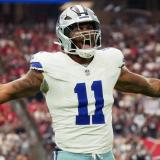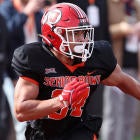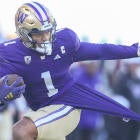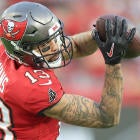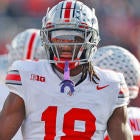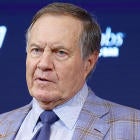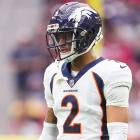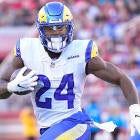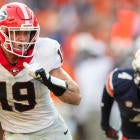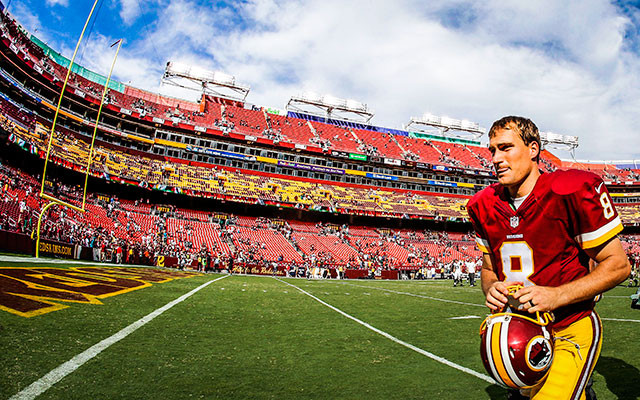
New storylines emerge every week. Some are reasonable, most are not. "The Week in Overreactions" focuses on the latter. Those items that offer a cursory "How do you do?" as they blow past reality straight for THIS IS THE MOST AMAZING THING EVER! We're here to keep everything in perspective. Questions, comments, casserole ideas? Hit us up on Twitter at @ryanwilson_07.
Kirk Cousins, RG3 and the Redskins QB situation
This is going to be a story until Robert Griffin III is gone from the Redskins' roster, either by his own choosing or because the team decides to move on without him. For now, he remains the franchise quarterback, if not in deeds then certainly by first-round pedigree. But the simmering pessimism about RG3's long-term prospects came to a boil last season, from fans, media and, it seemed, Mike Shanahan, the man who drafted Griffin in 2012 only to bench him for the final three games of the 2013 season.
But Shanahan is out, replaced by Jay Gruden, the former Arena League quarterback and brother to Jon Gruden, Super Bowl-winning coach and Monday Night Football color commentator who can find something good to say about any player. But even the always-sunny Jon Gruden admitted this summer that Griffin would need time to learn his brother's offense.
"This is going to be a process," he said in July. "It’s going to take a little time, but he clearly has the aptitude, intelligence and talent to be a great quarterback in this league no matter what offense you run. I’m going to temper everything -- it’s the first day I’ve seen. But all signs are good."
Signs were mixed in Week 1, when Griffin completed an impressive 78.4 percent of his throws against the Texans, but at times looked uncomfortable in the pocket and failed to score a touchdown in the 17-6 loss. Gruden's game plan came with training wheels to highlight RG3's strengths -- rollouts, play-action, misdirections -- to uncomplicate his reads and get the ball out of his hand quickly. But Griffin still took unnecessary hits, still held the ball too long when initial reads were covered, and still struggled with throws over 20 yards (he was 1-of-4 for 48 yards against the Texans).
But again, to echo Jon Gruden: This is a process. RG3 is 24, has tons of talent, and never saw a pro-style offense until he was ... well, a pro. Except Kirk Cousins looks perfectly comfortable in Jay Gruden's system, that point never clearer than Sunday when he replaced an injured Griffin and promptly proceeded to carve up a decidedly mediocre Jaguars defense.
But that's the point: good quarterbacks should look sharp against bad opponents, and Cousins was exactly that. His first pass of the day went for a touchdown, and he completed 11 consecutive passes after that. When it was over, he was 22 of 33 for 250 yards and two touchdowns, and talk of the "Kirk Cousins Era" was in overdrive before the sun had set on the Redskins' first victory of the season.
But here's the thing: Are we all comfortable with the idea that Cousins is a better choice than RG3? There's the anecdotal "every fan base loves the backup more than the starter" conversations but those are usually short-lived once said backup graduates to the top of the depth chart.
The reality is this: In 2012, Griffin's rookie season, he ranked seventh in value per play among all NFL quarterbacks, according to Football Outsiders' metrics. Even if we attribute some of that success to the Redskins' use of the read-option, the results are the same: After a slow start, Washington won seven straight, took the NFC East, went to the playoffs and RG3 had a lot to do with that.
Last season, Griffin came back from offseason knee surgery too soon, never looked like himself, and was eventually benched for Cousins, one of Shanahan's last defiant acts on his way out the door. So what did Cousins do? In five appearances (including three starts), he ranked 45th in total value per play among all quarterbacks, ahead of only Eli Manning, Geno Smith, Terrelle Pryor and Brandon Weeden.
In terms of conventional stats for those three starts, Cousins' 2013 numbers were just as troubling: 69-of-130 (53.1 completion percentage) for 747 yards, four touchdowns, five interceptions, four sacks, two fumbles.
It's hard to draw many conclusions from Cousins' end-of-year performance -- the season was lost long before he was thrust into the lineup -- but in those three starts (all losses) his completion percentage dropped in each game (from 64.4 to 58.3 to 38.8), as did his yards per attempt (8.5, 5.5, 3.4) and passer rating (94.8, 71.2, 31.8).
Over the summer, ProFootballFocus.com compared the two quarterbacks and found that Griffin was among the league's best on short throws (5-10 yards) and on third downs, but struggled on intermediate throws (11-20 yards) and was near the bottom on deep balls (20-plus yards).
Cousins, meanwhile, was good on deep balls, struggled on short throws and when taking drops of 9 yards or more (he threw four of his seven interceptions in this situation).
This doesn't mean Cousins can't be a capable NFL starter, or, hell, that he isn't the long-term answer in Washington. It's just to point out that, like Griffin, he's young, mistake-prone, and still learning the position.
To sum up PFF's findings another way: Griffin and Cousins do different things well. Both players have plenty of room for growth, but Griffin's ceiling is probably higher. The problem, at least for Gruden, is that Griffin's floor looks to be a lot lower too. Or maybe that's not a problem at all for the first-year coach.
We've talked about this previously and mentioned it on the latest Eye on Football Podcast: When Gruden was the Bengals' offensive coordinator, he had a chance to draft Colin Kaepernick. Instead, Cincinnati went with Andy Dalton (Kaepernick went a pick later to San Francisco), who led the team to three straight playoff appearances and recently signed a six-year, $115 million contract extension. Cousins' game resembles Dalton's, while Griffin and Kaepernick have similar styles. Given Gruden's success with Dalton, it stands to reason that Cousins would be a better fit in his offense, and not only that, Gruden will be able to open things up, unlike what we saw in the Week 1 loss to the Texans.
This all seems perfectly logical but it's worth remembering that Dalton is surrounded by playmakers on offense and has the full support of an aggressive, sometimes dominating defense. On paper, the Redskins have the offensive playmakers but the defense remains a question. As does Cousins, who looked great against the Jaguars, but has had stretches of forgettable football. It's just that we don't talk much about those moments because, right or wrong, the focus is always on Griffin.
But now Cousins is the starter, and he could be for the rest of the season. Consequently, expectations will change. Is he a better option than RG3? Right now, in Gruden's offense? Almost certainly. The issue is how much better. Because if the Redskins go 7-9 this season, Griffin remains the favorite for the job in 2015. If the Redskins go 11-5, however, things will get interesting.
Richard Sherman, world's most overrated cornerback
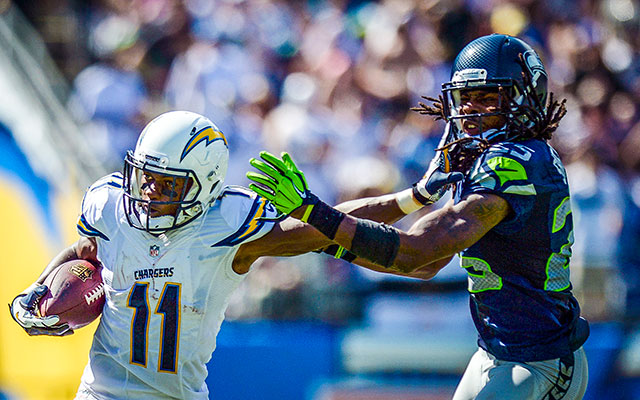
There were reports that some Chargers' players said Sherman was "exposed" in Sunday's loss.
Sure, Sherman was exposed on this play, but to say he was abused all afternoon speaks more to our unreasonably high expectations for one of the league's best cornerbacks than it does for how he actually performed.
That said, Sherman didn't help himself by a) not talking to the media after the loss, and b) answering his critics on Twitter hours later.
Lmao Exposed? .... Complete 3 passes 0 touchdowns 0 explosive passes.... These guys make me laugh
— Richard Sherman (@RSherman_25) September 15, 2014
Patrick Peterson missed a perfect opportunity to send out the obligatory "U mad, bro?" tweet.
Here's the thing: You can't be that guy who grabs the camera and yells about how great you are when things go well, but wave off the media after a less-than-stellar performance. Just own it -- good or bad.
The Cowboys are back!
Leave it to the Cowboys to no-show at home in Week 1 only to go on the road and throttle what looked to be a good Titans team. So what does the 26-10 win in Tennessee mean? In the scheme of things, not a whole lot. Tony Romo was efficient (19-of-29, 176 yards, 1 TD, 0 INT), avoided turnovers, and relied on DeMarco Murray to do most of the heavy lifting (29 rushes, 167 yards, 1 TD). Meanwhile, the Titans' offense self-destructed -- Jake Locker threw two interceptions -- and the Cowboys' defense, which pitched a first-half shutout, looked like something other than a field full of tackling dummies.
Jake Locker is a fine scotch. Needs to be aged for ten years, then used when you're too drunk to notice you waited ten years for nothing
— Spencer Hall (@edsbs) September 14, 2014
It was an encouraging sign but we've seen this before. The Cowboys have redefined what it means to be mediocre. They're now 1-1, and 137-137 going back to 1997. They're the NFL's version of Seinfeld's "Even Steven" with no hope of anything more. Just about all of that falls on owner and general manager Jerry Jones, who remains convinced he's the best man to fix the mess he created.
It's fun to watch from afar but is an undoubtedly tedious existence for Cowboys coaches, players and fans. And as long as Jones is running things (some, might say, into the ground), we have little faith that this team will ever be anything more than average.
About those Falcons
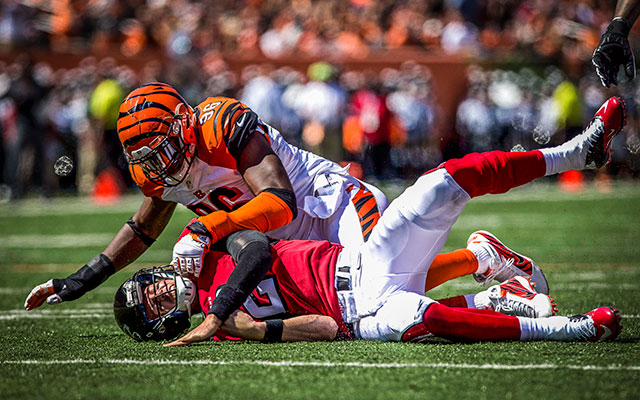
Maybe the story isn't that the Falcons, a four-win outfit a years ago, beat the Saints in Week 1. Maybe the story is that the Saints aren't very good right now and it's not a surprise that they went to Atlanta and lost. It's hard to fathom how New Orleans would be 0-2, but that's exactly where they find themselves after dropping their Week 2 game to the Browns. And the Falcons are 1-1 after being demoralized by the Bengals.
Heading into the season, we liked New Orleans for the obvious reasons: Drew Brees, Jimmy Graham, a resurgent Mark Ingram, and a good defense with a potentially great secondary. That all went out the window once the season started, which is why predicting games is a monumental waste of time (and yet we continue to do it).
But we had little-to-no faith in the rest of the division for one simple reason: the sorry state of the offensive lines in Atlanta, Carolina and Tampa Bay. At 2-0, the Panthers are one of the early surprises of 2014, but the Falcons and Bucs have been exposed, particularly along their O-lines. It's why we remain convinced that Atlanta is an 8-8 team at best. It has nothing to do with Matt Ryan, who is a franchise quarterback, or Julio Jones or Roddy White -- one of the best wide receiver duos in the league -- and everything to do with the offensive line's inability to keep Ryan upright long enough to find his downfield threats. And ultimately, that will determine how good this team can be.








